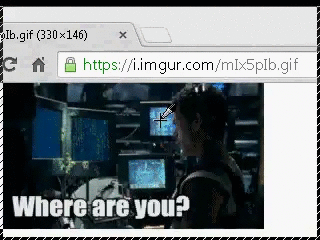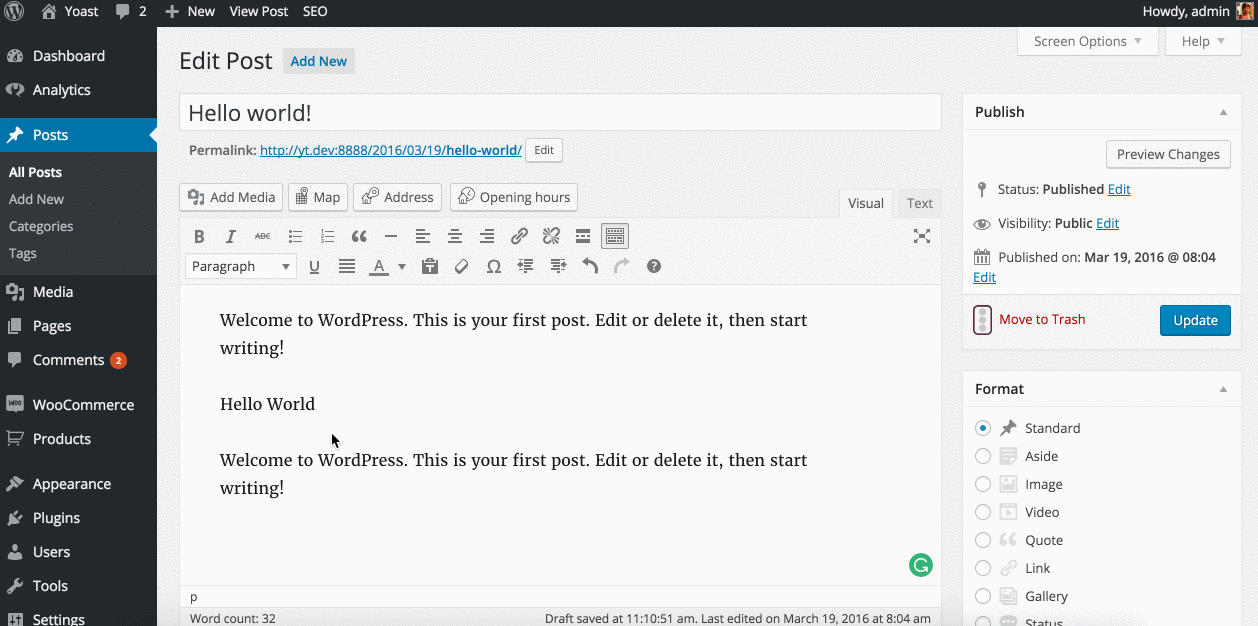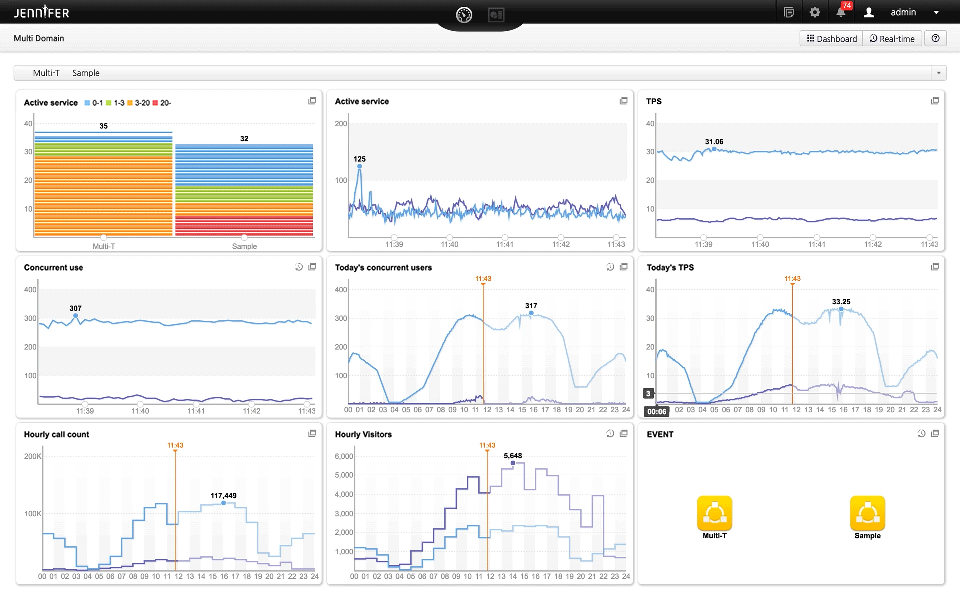A head start to understanding SEO:
What would you do if you wanted to find a piece of information—a product, a description, a statistic or a fact? You would immediately go to your search engine, enter a term or phrase, and click for results. Within a few seconds, the information would be at your finger tips. A reference to thousands of pages would come into sight, and all you’d have to do is to scan through those results and extract what you want.
This is what a layman understands by the term “search engine modules,” but it tends to be little more complicated. Search engine software uses algorithms to find and collect information from the web. The information is a keyword or phrase that is analyzed against the content of the web page, its URL, the code that makes it up, and links to and from it. This information is indexed and stored in the database. When you browse for
information, the search engine will examine what it has stored in the back-end data and retrieve results that match the search term the user has entered. Crawlers, spiders or web robots are the agents who collect information about the web page.
What is SEO?
Search engine optimization sets up your website in such a way that search engines like Google, Yahoo, Ask, etc. will rank it according to the organic keyword used. It’s a small modification to part of your website. Alone, the impact of SEO is minimal, but with combined effect of other optimizations, you could have a noticeable effect on your site’s user experience and performance in organic search results. SEO magnifies your website’s visibility in search engines rankings.
75% of users never scroll past the first page of search results

Let’s get to the nitty gritty of SEO and how it determines the success of online marketing. Marketers see SEO as trending towards becoming more effective. Marketers see SEO as becoming more effective with 82% reporting, efficacy is on the rise and 42% of people stating effectiveness is increasing significantly. Search engines use complicated formulas called ranking algorithms, which determine the order of the search results. These formulas are used to retrieve information from the database and rank sites in the SERP (search engine results page). Based on your website’s features and functionality, search engines determine your page rank and make it visible to millions of people.
I’ve put together a step-by-step guide to create a SEO plan for your business:
Small, inexpensive modifications to your website can have a great impact.
- Title tag and description tag
- Keywords3.
- Content
- Anchor text
- URL structure
- Navigation of the site
- Use of images in the site
- .Heading tags
- robot.txt
- Mobile site
- Website promotion
- Free webmaster tools
Using these factors, you can plan for SEO and customize it for your website:
1.Title Tag and description tag
Title tags are used so that both the users and the search engine understand the contents of the page. The title is displayed as the search result, i.e, the first link in the results listing. The description meta tag also appears along with the title, but is sometimes used as a snippet of your page. Your description should be unique and about 2-3 sentences long. The tags appearing in the search results should summarize the content of your site.

Stats:
- 93% of online experiences begin with a search engine.
- Search is the #1 driver of traffic to content sites, beating social media by more than 300%.
Best practices:
- Choose a title and description that effectively communicates the content of the web page.
- Avoid using vague titles like Untitled or Title1. Give your pages unique title tags.
- Steer clear of using single title tags or description meta tags across large groups
of pages. - Use a short title—a lengthy title may lose the user’s interest.
- Avoid stuffing keywords in the title.
2.Keywords
When it comes to attracting customers, keywords require special attention. For example, if you have a website dedicated to selling beauty products, you might assume “beauty products” would be a suitable keyword— but assigning keywords to your content requires you to understand your audience. Look through in the eyes of the user and understand what it is they are seeking for on your website. The user may look for “organic cosmetic products,” “grooming products,” “personal hygiene products,” etc.Keyword generation is a trial and error process, refined by studying your audience.

Keyword density is the ratio of keywords you are trying to target for SEO against the total content. The optimal level is 7 to 10 percent of the content. For example, if your page contains an article of about 300 words, it should not have more than 21 to 30 repetitions of a keyword. If you consistently create effective keywords, it will helps to increase traffic and conversion for your site, while remaining in the confines of your budget.
Stats:
- Businesses that have a strong keyword rank 1.5 spots higher than their competitors.
- 50% of search queries are four words or longer.
Best practices:
- Use optimal level keyword density so your website ranks at the top of the search
results. - Create unique keywords that accurately summarize the contents of the page.
- Don’t stuff keywords into your content in an attempt to improve your ranking—it will only hurt your cause.
- If your site contains only one keyword with high density, search engine crawlers
will examine your site, and in the worst case, it may be removed from the search
index completely.
3.Content
Content is the key aspect of marketing. Offering useful, quality content to the user will highly affect your website’s search ranking. Content should:
a.be relevant to the topic,
b.help the user gain information about its functionality,
c.adhere to the expectations of the target audience.
Construct your content to flow naturally. Break up complex concepts and arrange them in a simple way that users can understand. Build a valuable database of content that brings visitors back to your website frequently.
Expect differences in users’ understanding of your content. A long-term, English speaking fan of the series might will search using the acronym “HIMYM,” while a new fan might search for “How I Met Your Mother.” Keeping these differences in mind will help you create positive results in search queries.
Consider creating new content for the site that’s based on original research. Look for data that supports your theory. Resources like this can be very valuable to visitors.

Stats:
- 47% of all websites worldwide use a Content Management System (CMS) as their development platform (December 2016)
- High-quality content and link building are the two most important factors used
by Google to rank your website. - Longer content tends to rank higher; the average first page result on Google
contains 1,890 words. - Long-form content of over 1,000 words consistently receives more shares and
links than shorter-form content.
Best practices:
- Update your content as often as possible. Make sure that you release new articles at least once in a week to stay with the pace of your audience.
- New content will not only entertain your existing base of visitors; it also brings in new visitors to your site.
- Keep your content fresh, interesting, and focused.
- Break up content with interesting titles and subheadings, along with stats to support your ideas.
- Keep paragraphs short to make it easy for the user to access information.
- Avoid duplicates or near— duplicated versions of content (a.k.a. “content scraping”) across your website.
4.Anchor Text
Anchor tags, or anchor text, creates links to other pages. It is clickable text in your content that directs the user either internally (to other pages of the website) or externally (leading to other sites). It helps users to navigate through your site.

Stats:
- Higher ranking pages have larger percentage of exact match anchor text links in their backlink profile. They influence across 16K keywords by analysing 320K pages.
Best practices:
- Anchor text should inform both the user and the Google interface about its
content. - Avoid using anchor text as a call to action button (e.g. “Click here.”)
- Aim for short but descriptive text using brief phrases.
- Have more internal links than external. This will allow both users and search
engines to navigate through your site easily. - Distinguish between normal and anchor text- Hyperlink and anchor text are one
in the same. Hyperlink are that the user can immediately access, usually by a
mouse. Anchor text is the visible, clickable text in a hyperlink. - Your page will rank higher if many links point to a page with the right keywords
in your anchor text. - Avoid using lengthy or keyword-filled text for ranking.
5.URL (Universal Resource Locator) structure
Carefully structuring your website’s URL is one of the fundamental building blocks of SEO. “URL structure” may sound like gibberish, but it is important to incorporate this strategy. Remember that the URLs are displayed in search results. The key point of the website can be delivered by a well constructed URL. For example, a poorly constructed URL would look something like “http://search-engine?9optimizaton/1lhhy85b275d63fb448bab20eae02b76ee1d9-?,” while a well-constructed, traffic generating website’s URL would be something like “http://www.info.com/search-engine/optimization/Starter-guide/structuring-URL/”.

Stats:
●Brands that use shortened URLs with a “vanity domain” experience an average
increased click volume of 25%, compared to longer original links.
●Social sharing with shorter URLs that clearly communicate the site and content
perform better than non-branded shorteners or long, unclear URL strings.
Best practices:
●Construct simple and understandable URLs that clearly convey the content of the
site.
●Create shortened URLs; an optimal URL contains 50-60 characters.
●Match the URL to your page title and add some keywords, as well (but not
excessively).
●Remove unneccessary punctuation; hyphens and underscores are often used as
word separators.
●Make it readable by using words instead of numbers.
6.Navigation of the site
Make your site easy for your visitors to navigate. Navigation includes page loading time, movement across the website, and engaging visitors so they’ll stay active on the site longer and will come back to it. A navigation plan is based on the structure of the home page. For example, an ecommerce website selling apparel might have a home/root page that consists of categories like women’s, men’s, and children’s departments. Under each category, further subcategories are given: shirts, outerwear, etc. Further movement will lead you to different segments. This kind of navigation is called the breadcrumb model. It also allows visitors to easily go back to the previous page.

Stats:
- Given 15 minutes to consume content, two-thirds of people would rather read something beautifully designed than something plain.
- 39% of people will stop engaging with a website if images won’t load or take too long to load.
- 38% of people will stop engaging with a website if the content/layout is unattractive.
Best Practices:
- Upgrade your website with live chat software to create active participants, communicate with your visitors, and convert them into hot prospects.
- Simplicity and ease of use is the key. Create a naturally flowing hierarchy for users to move from general content to a specific content.
- If you have a navigation bar at the left side of the page, maintain the same layout in the following pages.
- Limit dropdown menus as a navigational tool; they may not be identified by search engine crawlers. .
- 44% of website visitors will leave a company’s website if there’s no contact information or phone number, while live chat software can close deals instantly.
7.Use of images in your site
Images make up a large part of content. Supporting your content with related images will increase a visitor’s memory of your website. It can also help them better understand your content, especially if you use info graphics. Use the image ALT attribute to provide information about the image. That way, if for some reason a visitor can’t view the image,they’ll still have context for it from your description.

Stats:
- Using a single image within content will increase search engine rankings.
- 72% of consumers who did a local search visited a store within five miles which had images of the product they were looking for.
Best Practices:
- Use brief but descriptive filenames and alt text.
- The commonly used supported image formats are JPEG, GIF, PNG, and BMP.
- Avoid stuffing keywords in alt tags.
8.Headings Tags
Heading tags are used when constructing a website to provide structure to the content. There are six heading tags, from
, used to denote the most important text, through
, denoted by the least important text in the content. Heading tags create the different font sizes that are the visual cues used by the readers to understand the purpose of the text. They help the customer navigate easily through your website.
Multiple headings types can help create a hierarchical flow.
Multiple headings types can help create a hierarchical flow.

Stats:
- High-quality tags make it easier for Google to see what your website is all about.
- Google’s shift toward semantic search could affect the relative importance of the title tag.
Best Practices:
- Heading tags helps to engage the visitor.
- Segment content by headings and sub-headings so that customers don’t lose interest.
- Avoid excessive use of heading tags in a single page.
9.robot.txt
The robot.txt file tells the crawler whether it can access your website or not. You may not want crawler to view certain pages of your site and display them on a search engine result page. Google has come up with a friendly robot.txt generator which helps you to restrict certain pages from the crawler’s access. It’s a publically available file, so everyone can view which parts of the server are restricted.

Best practices:
- Be specific in denoting which parts of the server crawlers can access.
- Use more secure methods for sensitive content.
- A robot.txt file can’t hide information on your site from visitors or make your content private.
10.Mobile site
40% of people, in an average day, search exclusively from their smartphones. Mobile sites face many challenges. They not only use different formats from a desktop site, but they also require a different layout altogether. Websites should be mobile-friendly, and should also contain information in a more simple form, because mobile users are often not patient enough to read through each and every line. They expect quick and instant search results. To keep up with the competition and to gain the momentum with the customer, you have to design layout in such a way that the message is sent across in the most effective manner and will remain in their memory.

Stats:
- Google accounts for over 94% of all mobile/tablet search traffic globally, followed by Yahoo at 3% and Bing at 1%.
- 75% percent of internet use will be mobile in 2017, up from 71% this year, as a growing number of consumers around the world access the web on smartphones and tablets.
Best Practises:
- Notify Google about your mobile site so that it configures and indexed correctly.
- Some people access info both from mobile and desktop. They search for information on the go and do thorough research once they get back to their desk. It depends upon how memorable the characteristics of the website are.
- 62% of B2B marketers and 51% of B2C marketers have optimized their blogs for mobile in order to improve SEO.
- Redirect mobile users to the mobile-optimized version of the content.
- Website content should vary on how users access it; for mobile users the website should load faster, even using 2G or 3G mobile data.
11.Website promotion
Promoting your website is essential. Effectively sharing new ideas and deals on your website will lead to faster discovery by those who are interested in the same content. In today’s world, it’s innovation and persistence that determine your existence in this digital platform.
Incorporate latest technology in your strategy— for example, add your business location to Google Places help people to identify your shop in Google Maps. Google Maps shows nearby places and your business is likely to be listed in those and easily approachable by the customer.

Stats:
- 81% of surveyed marketers have integrated social media marketing with traditional marketing to increase the discoverability of their websites.
- Social media sites accounted for 2.8% of website visits in Q2 2016.
- Facebook produced 61% of all website visits generated on social media sites in Q3 2016.
Best Practices:
- Social media has elevated promotion; social media tools can help you conduct campaigns and effectively promote your brand.
- Social media is also useful to inform a wide audience about your latest offers, discounts, and new arrivals.
- Reach out to your niche market, and follow the trends in your industry.
12. Make use of free webmaster tools.
Major search engine sites like Google and Yahoo offer free webmaster tools to identify issues and rectify them. Google analytics is especially helpful in understanding user behavior on your site. It tracks and generate reports on website traffic. Observing these trends can help pinpoint the changes to incorporate for better results. Google also offers a Website Optimizer.

Conclusion:
Search engines constantly change their algorithms, but some aspects of SEO remain the same. The eternal truth is that these factors aid your ranking in SERP by making it easier for search engines to retrieve information. Implementing these strategies can help your chances of ranking organically. SEO impacts almost every aspect of your website and webpages. Careful integration of SEO tools and techniques can increase website traffic and provide a cost benefit for maintaining the site. These small changes can support larger value in your revenue.


